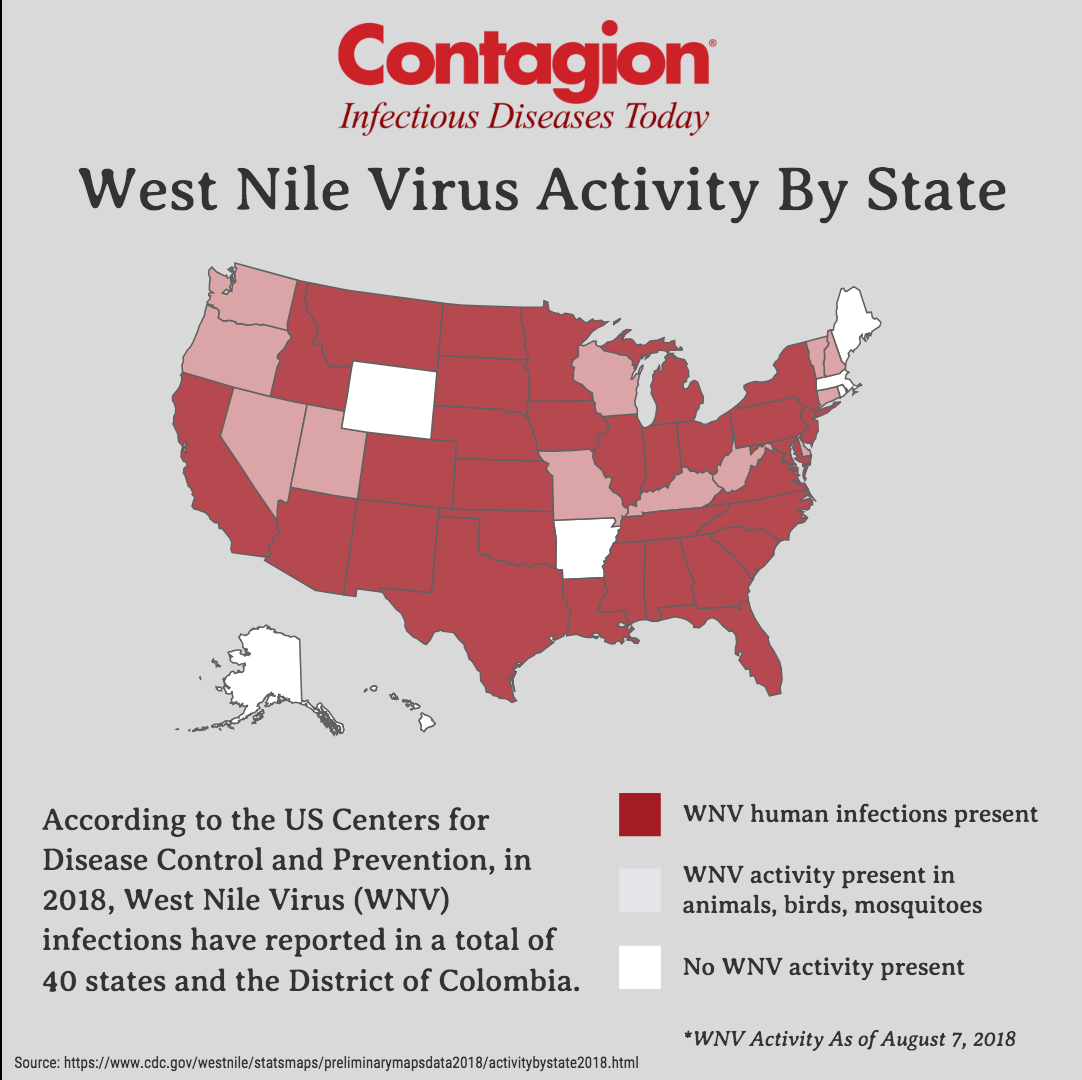West Nile Virus Activity Reported in 40 States and District of Columbia
In addition to over 100 cases across the country, the first case of WNV infection for 2018 was just reported in Contagion®’s home base of New Jersey.
West Nile virus (WNV) was first reported in the United States in 1999 and every summer since then the country has seen an increase in cases.
As of August 7, 2018, WNV activity—which includes infections in humans or animals, birds, and mosquitoes—has been reported in 40 states and the District of Columbia (see map). A total of 106 cases of human infection have been confirmed thus far.
According to the CDC, 8 out of 10 individuals who become infected with WNV do not experience any symptoms; however, 1 in 5 will develop a fever and other symptoms such as headache, aches, joint pain, diarrhea, vomiting and fatigue, which can persist for weeks to months.
Approximately 1 in 150 people who experience WNV infection will experience severe neuroinvasive illness and develop severe symptoms including high fever, neck stiffness, disorientation, and coma, which can lead to encephalitis or meningitis. Severe illnesses are more prevalent in individuals over the age of 60 years and those with certain medical conditions including cancer, diabetes, and kidney disease.
Preliminary data for 2018 indicate that, to date, 62 (58%) of the WNV infection cases in the United States have been classified as neuroinvasive, and 44 (42%) have been classified as non-neuroinvasive diseases.
On August 4, 2018, the first case of WNV infection in New Jersey was reported in Hunterdon County, about 42 miles west of Contagion®’s home base of Cranbury, New Jersey. The New Jersey Department of Public Health reported that 284 mosquito pools in 20 counties have tested positive for WNV. This finding is 48% higher than the number of positive pools at the same point in 2017. There were 8 human cases of WNV reported in New Jersey in 2017.
To stave off infection, the CDC recommends using insect repellents with 1 of the following active ingredients: DEET, picaridin, IR3535, lemon eucalyptus oil, para-menthane-diol, or 2-undercanone. Additional prevention measures include wearing long-sleeved shirts and long pants to avoid bites, and draining any items that hold water inside and outside of homes, such as birdbaths, pools, trash containers, and buckets.

